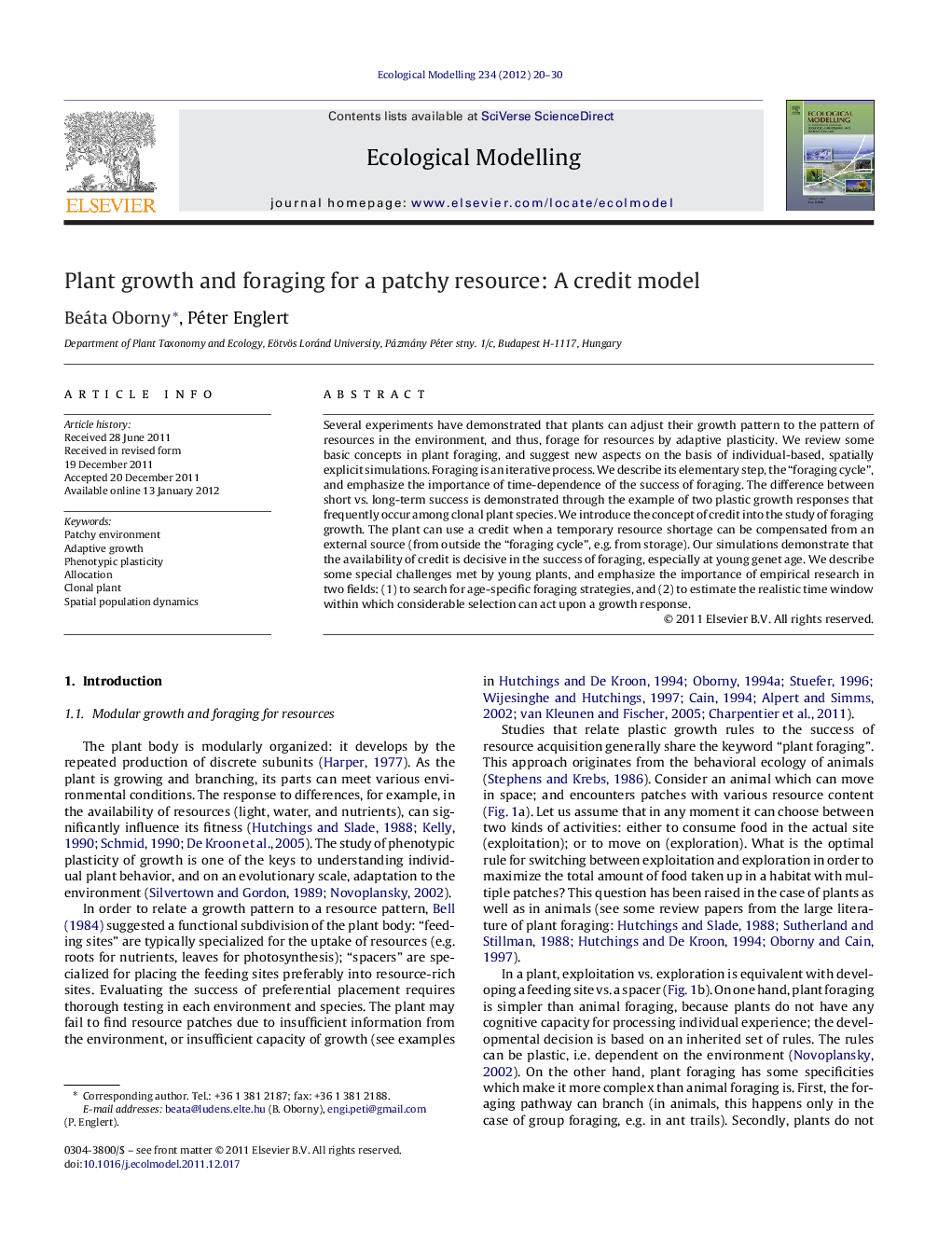| Article ID | Journal | Published Year | Pages | File Type |
|---|---|---|---|---|
| 4376491 | Ecological Modelling | 2012 | 11 Pages |
Several experiments have demonstrated that plants can adjust their growth pattern to the pattern of resources in the environment, and thus, forage for resources by adaptive plasticity. We review some basic concepts in plant foraging, and suggest new aspects on the basis of individual-based, spatially explicit simulations. Foraging is an iterative process. We describe its elementary step, the “foraging cycle”, and emphasize the importance of time-dependence of the success of foraging. The difference between short vs. long-term success is demonstrated through the example of two plastic growth responses that frequently occur among clonal plant species. We introduce the concept of credit into the study of foraging growth. The plant can use a credit when a temporary resource shortage can be compensated from an external source (from outside the “foraging cycle”, e.g. from storage). Our simulations demonstrate that the availability of credit is decisive in the success of foraging, especially at young genet age. We describe some special challenges met by young plants, and emphasize the importance of empirical research in two fields: (1) to search for age-specific foraging strategies, and (2) to estimate the realistic time window within which considerable selection can act upon a growth response.
► Plants can adjust growth pattern to resource pattern in the environment. ► Our simulations predict age-dependent adaptive strategies. ► Credit can greatly increase the efficiency of foraging. ► This is particularly important at young age. ► We suggest a systematic survey on the availability and effects of credit over time.
